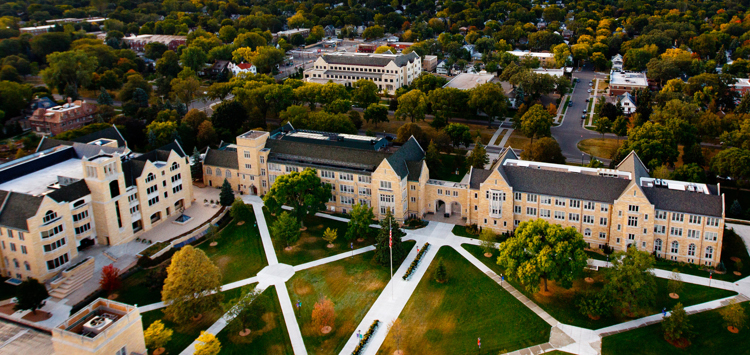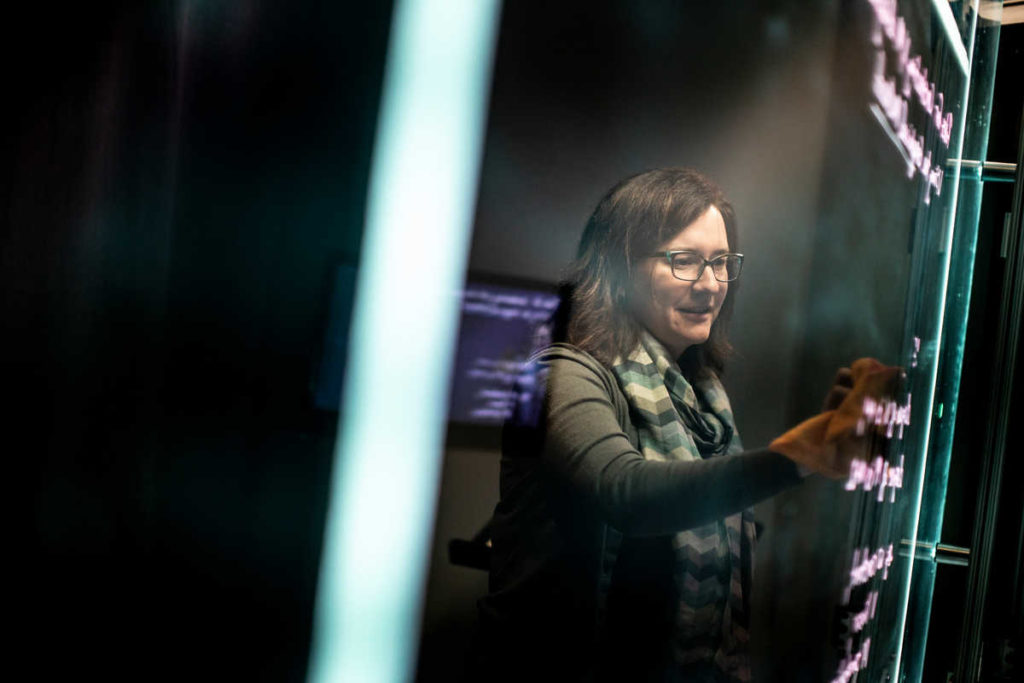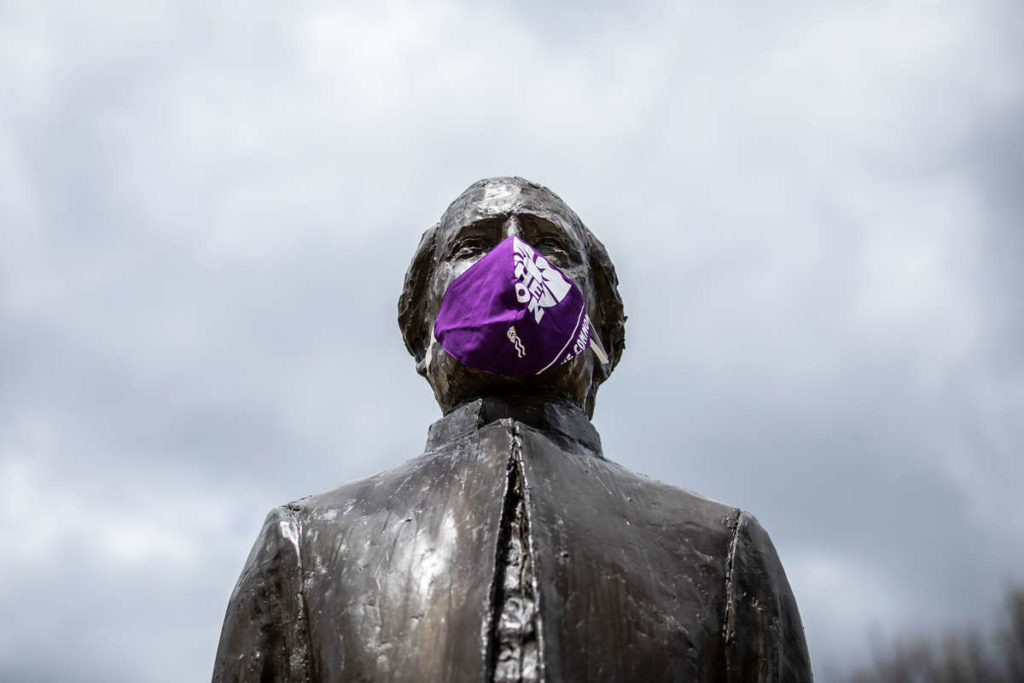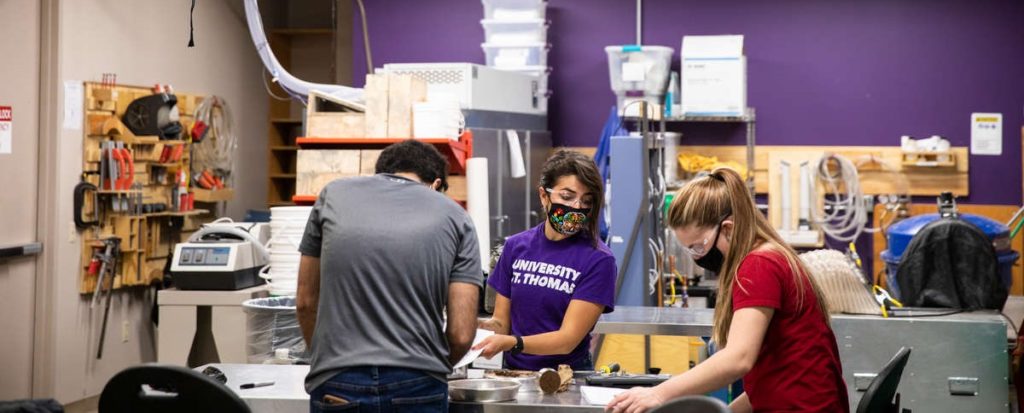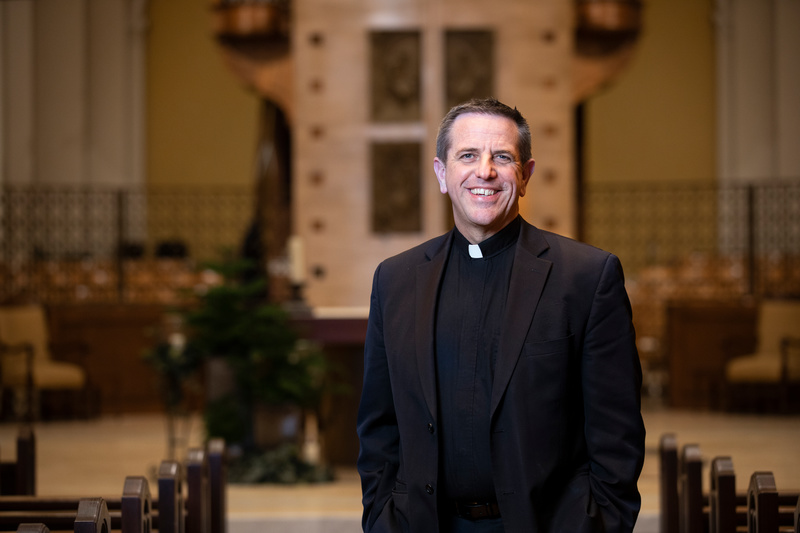As promised in my last communication, I want to continue to update you on how we are responding to the COVID-19 crisis and share with you what this means for the St. Thomas community.
I am grateful for the sacrifices everyone is making every day. I recognize that COVID-19 has greatly impacted your personal and professional lives and appreciate that you are doing everything you can to ensure a strong St. Thomas into the future.
In the midst of this crisis, we must continue to fulfill our mission and maintain academic progress for our students. That means ensuring that we continue to serve our students in the present day, prepare for resuming on-campus operations and envision how we will adapt and thrive in a post-COVID world.
Fall Operations
We are preparing to be open this fall and welcome students to our classrooms and residence halls with the institution of appropriate health and safety protocols. We do not yet know exactly what our next “new normal” will look like, but we anticipate a balance of in-person and virtual instruction. We are planning now for multiple learning options to ensure our commitment to educating the whole person and providing personal attention for every student continues.
The safety of our students, faculty and staff is of paramount importance. We are developing a detailed preparedness plan for resuming in-person operations, which will be guided by recommendations from the Minnesota Department of Health and the Center for Disease Control. While reopening will require a large amount of resourceful innovation and preparatory work, I am confident we will achieve our personalized education mission and our commitment to health and safety.
Mitigation Strategies
Like all institutions of higher education, COVID-19 has negatively impacted our finances. We experienced a $8.1 million revenue shortfall from spring semester, primarily related to student refunds of room and board. We will incur an additional $2.1 million loss this summer primarily from the cancellation of all summer conferences and external events, as well as fewer residence hall students and the reduction in dining services and campus store sales. Our scenario planning steering committee has been developing recommendations based on these leadership principles, as we consider current and additional potential losses during the upcoming academic year, which could range widely from $20 to $60 million depending on the severity and duration of the pandemic.
We need to act now to ensure that our finances remain stable for the future and to strengthen our ability to adequately respond to future scenarios.
Recall, on April 17, we announced the following mitigating steps:
- Reduction in salaries for the President’s Cabinet.
- No compensation increases for fiscal year 2020-2021.
- A university-wide hiring freeze.
- Suspension of university-sponsored travel, reduction in discretionary spending across the university and deferred spending on capital projects.
As we journey into the summer and plan for the fall, additional expense reductions are necessary. I am keenly aware that many of the following reductions will have impacts on people, and I do not take this lightly. I have asked that our decisions reflect that we all contribute to educating our students, and we are all in this together. Ultimately, there must be shared sacrifice among all employees, including administrators, faculty and staff. I have also asked that the decisions minimize impacts on employees who are most financially vulnerable.
Retirement Suspension and Salary Reduction
In March, I committed to full salary continuation for all employees until May 15. I am grateful that the university was able to provide that certainty to employees at the challenging outset of the crisis. Unfortunately, in light of the ongoing reduced operations on campus, we cannot continue this practice. Effective May 15, we will take the following measures to help address our financial losses:
- We will suspend the current 9.4% employer contribution to our 403(b) retirement plan for all 1,600 benefits-eligible employees, which includes faculty, staff and administrators, through December 31, 2020.
- Staff employees, including administrators, who earn more than $58,500 will be subject to a reduction in salary of between 0% and 10%, depending on salary level. These reductions will be applied on a graduated basis, with the maximum reduction of 10% applying to employees making $100,000 or more. This reduction will begin May 15 and continue through December 31, 2020.
- Regular faculty employees also will experience a reduction in pay, in amounts consistent with staff salary reductions, but these reductions will begin at a different time in order to align with faculty appointments for the 2020-2021 academic year. Faculty salary reductions will begin on September 1, 2020 and continue through approximately April 15, 2021. These reductions affect all faculty who fall within the definition of “full-time faculty” under the Faculty Handbook.
These measures will be further detailed in a policy that we expect to issue by the end of the academic year.
The measures above are temporary and designed to help us strengthen our financial picture, retain as many employees as possible, and share the burden of difficult times. These decisions will be reviewed continuously, dependent on public health recommendations, and how well we are performing financially. I have asked our scenario planning steering committee to formally review these actions in both September and December. If our outlook improves and we recover losses more quickly than anticipated, it will be my highest priority to end the retirement and salary reduction measures and return salaries to normal levels prior to the dates specified above. On the other hand, we may be in a situation where continuing these measures beyond 2020 is necessary.
Reduction/Change in Operations and Furloughs
In addition, staff whose work is most impacted by our temporary reduction in operations this summer will be furloughed anywhere from four to 15 weeks over the summer. Employees who are furloughed will not experience a salary reduction. During a furlough, employees will maintain health and tuition remission benefits, and the university will pay the employee and family portions of medical, dental and eye coverage.
Fortunately, the unemployment insurance program has been changed through recent legislation to enable those on furlough to access a robust safety net. While those who make $62,000 or less will have the greatest opportunity to make up a loss in income, all furloughed employees may access unemployment benefits. In addition, all furloughed employees will be provided information about how to apply for unemployment compensation.
Effective May 18, all non-exempt employees will be paid only for hours worked. Employees who are not on-campus essential employees and who cannot fill their normal work duties from home must talk to their manager. Scheduled hours may be reduced to match business continuity needs. In addition, the temporary hourly premium of $2.00 per hour that the university began paying in March to on-campus, essential non-exempt employees will be discontinued after May 15.
As we envision the future of the university, some units need to structure their operations differently now, which could result in layoffs and restructured positions. These decisions will be made within the unit and undertaken with care and deliberation.
Every employee impacted by these changes will have a conversation with his or her manager before May 15.
In the next week, Human Resources will send more information regarding reduced pay, retirement changes, and furloughs. There also will be additional information about unemployment benefits and other resources for employees.
Vacation Time and Voluntary Leave
Exempt employees with unused vacation will be allowed to carry over up to five days of vacation to fiscal year 2020-2021, including exempt employees who are furloughed. Current policy or collective bargaining language remains in place with respect to vacation carryover for non-exempt and union employees.
We recognize that some employees may want time beyond their earned vacation for childcare and other responsibilities during the summer. We are encouraging a voluntary reduction of hours for employees whose workload would permit them to reduce the number of days per week or weeks worked, consistent with the principles set forth in the Hourly Employee Purchased Leave Time program and the Voluntary Unpaid Time-Off Program.
Additional Measures to Reduce Costs
We are considering all options in order to achieve our educational objectives for our students while best protecting our employees through the course of this pandemic. Thus, the university will take the following additional measures to reduce costs:
- All faculty sabbaticals will be postponed for one academic year and faculty research grants will be deferred. We also are reviewing the qualifications and conditions for faculty miscellaneous pay.
- We are deferring and reducing additional spending wherever possible, including deferral of planned computer replacements and reduced spending on internal events, such as the holiday party.
- Our current plan to transition to a new athletics conference continues, subject to approval from the NCAA. We are more slowly phasing in the spending as compared to our initial plans, consistent with our commitment to not adversely impact the current operating budget.
- We will use our operating budget reserves and unrestricted endowment earnings to the extent that it is feasible and consistent with our fiscal and stewardship responsibilities. Most of our endowment funds are legally designated for specific purposes and cannot be repurposed. Also, our reserves and endowment are invested in the financial markets, and negatively impacted by recent investment returns. Finally, some preservation of operating reserves and unrestricted endowment is required to maintain our credit ratings and positive accreditation reviews.
- We continue to defer capital and building projects. We are finishing the construction projects already underway, i.e., our new residence halls and the Iversen Center for Faith, but we are not undertaking new projects. While we continue to plan and fundraise for the STEAM project, no operating dollars will be used in the next two years on this project.
Envisioning the Future
COVID-19 will continue to have dramatic effects on our world and on higher education. In addition to the health and economic carnage this pandemic has inflicted, it is shining a glaring light on the injustices and inequities in our communities. There is an awakening to the reality that injustice is unsustainable, and the health of the whole world rests largely on the wellbeing of our most underserved communities.
I strongly believe that our ability to develop morally responsible leaders ready to encounter the world and write humanity’s next chapter is needed now more than ever. Complex problem solvers with empathy and the ability to lead change will be the leaders in our post-COVID world. Preparing these leaders is what St. Thomas does best! I am confident we will effectively navigate this new world together as One University, with our mission not only intact, but further strengthened.
As changemakers, we know that creativity can be forged from hardship. This is a difficult moment for St. Thomas, but it is also a time to lean on our strengths, our creativity and each other to imagine and create a pathway to our St. Thomas future which is brighter than our past.
I express my gratitude to the members of the scenario planning steering committee for their robust discussions and thoughtful recommendations. Once again, I also express my gratitude to each of you for your part in contributing to our university’s past and its exciting future.
I lift you up in prayer every day and am looking forward to being back on campus with all of you and our students.
